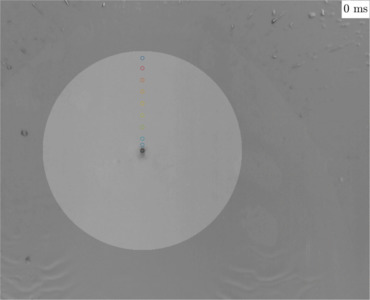Wassenberg, J. ; Stephan, P. ; Gambaryan-Roisman, T. (2024)
Heat transfer during pulsating liquid jet impingement onto a vertical wall.
In: Heat and Mass Transfer = Wärme- und Stoffübertragung, 2021, 57 (4)
doi: 10.26083/tuprints-00023904
Article, Secondary publication, Publisher's Version
|
Text
s00231-020-02973-z.pdf Copyright Information: CC BY 4.0 International - Creative Commons, Attribution. Download (1MB) |
||
![[img]](https://tuprints.ulb.tu-darmstadt.de/23904/3.hassmallThumbnailVersion/231_2020_2973_MOESM1_ESM.gif)
|
Image
(Supplement)
231_2020_2973_MOESM1_ESM.gif Copyright Information: CC BY 4.0 International - Creative Commons, Attribution. Download (90MB) | Preview |
|
![[img]](https://tuprints.ulb.tu-darmstadt.de/23904/4.hassmallThumbnailVersion/231_2020_2973_MOESM2_ESM.gif)
|
Image
(Supplement)
231_2020_2973_MOESM2_ESM.gif Copyright Information: CC BY 4.0 International - Creative Commons, Attribution. Download (25MB) | Preview |
| Item Type: | Article |
|---|---|
| Type of entry: | Secondary publication |
| Title: | Heat transfer during pulsating liquid jet impingement onto a vertical wall |
| Language: | English |
| Date: | 30 April 2024 |
| Place of Publication: | Darmstadt |
| Year of primary publication: | April 2021 |
| Place of primary publication: | Berlin ; Heidelberg |
| Publisher: | Springer |
| Journal or Publication Title: | Heat and Mass Transfer = Wärme- und Stoffübertragung |
| Volume of the journal: | 57 |
| Issue Number: | 4 |
| DOI: | 10.26083/tuprints-00023904 |
| Corresponding Links: | |
| Origin: | Secondary publication DeepGreen |
| Abstract: | Liquid jet impingement is used for cooling and cleaning in various industrial branches. The advantages of jet impingement include high heat and mass transport rates in the vicinity of the impingement point. Pulsating liquid jets impinging on horizontal substrates with a pulsation frequency around 100 Hz have been shown to increase the cooling efficiency in comparison to jets with continuous mass flow rates. The influence of jet pulsation on cooling efficiency for impingement of horizontal jets onto vertical walls has not yet been investigated. In the case of a vertical heated wall, gravity contributes to the liquid flow pattern. In particular, if the time span between two pulses is sufficiently long, the liquid drainage from the region above the impingement point can contribute to heat transport without increasing the average flow rate of the cooling medium. In this work, the influence of pulsations on heat transfer during impingement of a horizontal liquid jet onto a vertical wall is investigated experimentally for the pulsation frequency range 1–5 Hz. The results regarding increase of heat transfer efficiency are related to flow patterns developing by impingement of successive pulses, as well as to the liquid splattering. |
| Uncontrolled Keywords: | Engineering Thermodynamics, Heat and Mass Transfer, Industrial Chemistry/Chemical Engineering, Thermodynamics |
| Status: | Publisher's Version |
| URN: | urn:nbn:de:tuda-tuprints-239042 |
| Classification DDC: | 500 Science and mathematics > 530 Physics 600 Technology, medicine, applied sciences > 620 Engineering and machine engineering |
| Divisions: | 16 Department of Mechanical Engineering > Institute for Technical Thermodynamics (TTD) |
| Date Deposited: | 30 Apr 2024 11:17 |
| Last Modified: | 30 Apr 2024 11:17 |
| SWORD Depositor: | Deep Green |
| URI: | https://tuprints.ulb.tu-darmstadt.de/id/eprint/23904 |
| PPN: | |
| Export: |
 |
View Item |




 Drucken
Drucken
 Impressum
Impressum